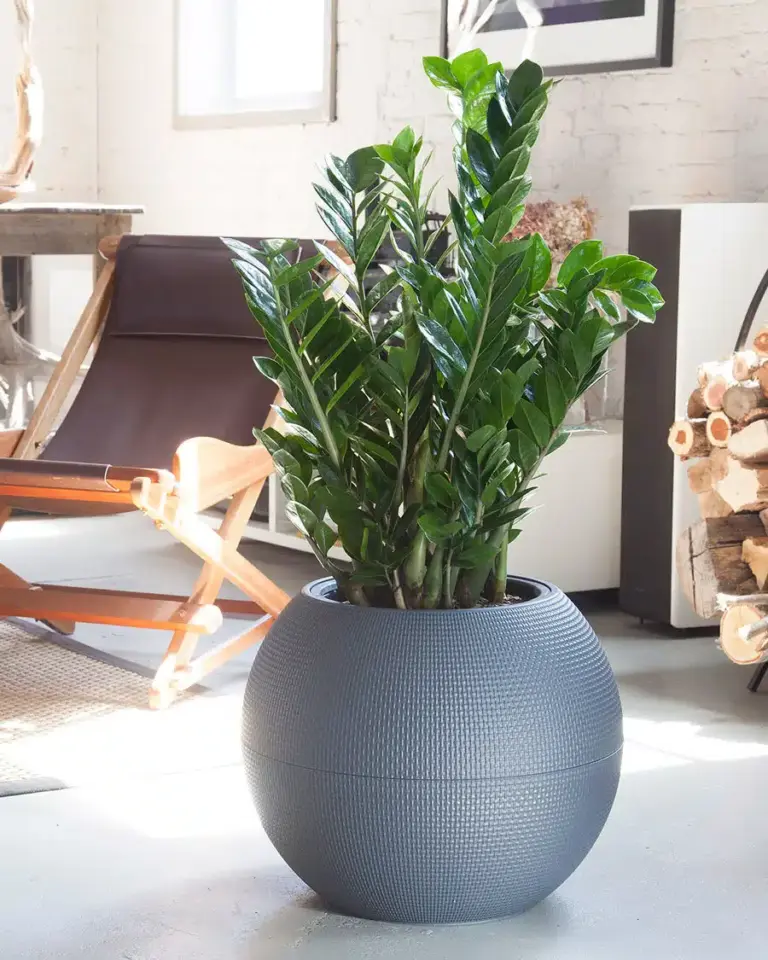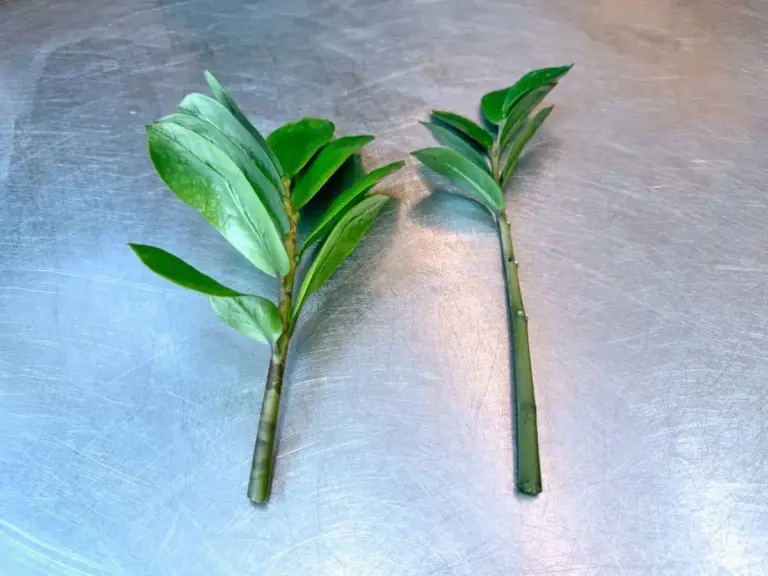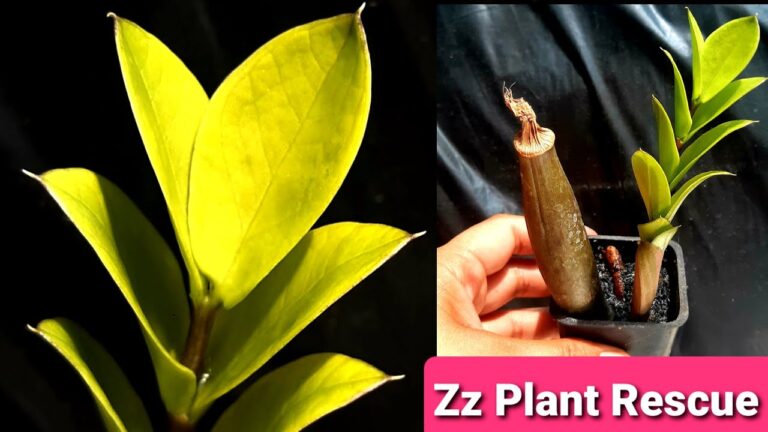Understanding Fertilization for ZZ Plants
Introduction to ZZ Plant Fertilizer
Gardening indoors has taught me one big thing: ZZ plants love a little boost to stay their cheerful, green selves. These sturdy fellas, officially known as Zamioculcas zamiifolia, might not need constant pampering, but a sprinkle of the right nutrients now and then can work wonders. When you give them some fertilizer love, you’re basically serving up a feast that boosts growth and keeps their leaves looking fab.
Choosing your plant food wisely is key. A liquid mix like the trusty 20-20-20 formula is solid gold for ZZ plants. According to the green thumbs at Proflowers, it’s a good idea to feed your ZZ buddy once or twice in the lively seasons of spring and summer. That’s when your plant is bustling with energy and hungry for goodies. Oh, and a pro-tip for newbies: stick to half-strength doses at first. It’s like baby steps for your plant.
Nutrient Requirements of ZZ Plants
Getting to grips with what ZZ plants actually crave is half the battle. Like most houseplants, these guys go mad for a balanced diet of nitrogen (N), phosphorus (P), and potassium (K). It’s a magic trio in the plant world sometimes referred to as N-P-K.
Nitrogen (N): Critical for leaf magic, nitrogen makes sure your plant doesn’t look jaundice. If you start spotting yellow on old leaves, it could be hinting at a nitrogen shortage. So, keep that nitrogen level right up there!
Phosphorus (P): Though ZZs aren’t exactly famous for flowers, phosphorus is all about that strong foundation—good roots make a happy plant. It’s like setting up a really good WiFi connection for nutrient flow.
Potassium (K): The unsung hero, potassium, quietly takes care of business like hydration and making sure your plant isn’t a magnet for diseases. With a well-rounded fertilizer like 20-20-20, you’re covered.
| Nutrient | What It’s For | Shortage Signs |
|---|---|---|
| Nitrogen (N) | Leafing out beautifully | Older leaves going all yellow |
| Phosphorus (P) | Strong roots & basics | Weak growth, roots on strike |
| Potassium (K) | Hydration, sturdiness | Crispy leaf tips, floppy stems |
Getting the timing and amount of fertilizer just right can dodge dicey issues like over-zealous feeding. Too much can mess them up—think leaf scorch or mood swings like wilting and root tantrums. Always keep an eye on your leafy mate after feeding to tweak care as needed.
For more savvy care tips, dive into our other ZZ plant guides on giving your plant a drink or adjusting its sunbathing routine. With these tricks up your sleeve, your ZZ plant will be the superstar of your indoor garden show.
Fertilizing Techniques for ZZ Plants
If you want your ZZ plants to thrive, nailing the right fertilizing vibe is key. I’m here to spill the beans on the best ways to feed these green beauties so they grow big and strong.
Best Fertilizer for ZZ Plants
Choosing the top-notch plant grub for your ZZ plants needs a delicate balance. Liquid fertilizers with a balanced mix—like a good ol’ 20-20-20 ratio—are spot on. These bad boys deliver all the basics: nitrogen, phosphorus, and potassium in just the right mix.
Fertilizer Types
- Liquid Fertilizers: These babies are easy to splash around and let you keep control over how much you’re feeding.
- Slow-Release Granules: They stick around longer, so you don’t need to mess with them as often.
- Organic Stuff: If you’re into keeping it green, these do the job and keep the planet happy.
Just make sure to water down liquid fertilizers to about half-strength. Too much of the good stuff can turn ugly. If you fancy going organic, there’s plenty of natural options out there.
Fertilizing Schedule for Optimal Growth
ZZ plants love a bit of a routine when it comes to feeding. They perk up in spring and summer, but in fall and winter, they’re all about that lazy vibe.
Suggested Fertilizing Schedule
| Season | Frequency | Heads Up |
|---|---|---|
| Spring and Summer | Every 3 weeks | Go easy with diluted liquid fertilizer like 20-20-20 |
| Fall and Winter | Chill out or stop | They’re hibernating; too much chow stresses them out |
Stick to this timetable to dodge any ‘Oh-no’ moments like yellow leaves or slowpoke growth. Give it a tweak if your home’s conditions are a bit quirky or if your plant’s feeling off-color.
If you’re curious about keeping your plant comfy during nap time, peek at our guides like zz plant winter care and zz plant humidity.
Getting the feed right is a big deal for happy, healthy ZZ plants. Regular bites during their active time encourage that lush, vibrant look and might even bring on some flowers. For the full scoop, look into cool topics like zz plant leaf propagation and zz plant trimming.
Identifying and Fixing Fertilizer Problems
Overloading your ZZ plant with fertilizer can spell trouble. Let’s look into how to spot and tackle these issues so your plant stays happy and healthy.
Spotting Fertilizer Trouble in ZZ Plants
Going heavy with the fertilizer on your ZZ plant can show up in all kinds of ways. Watch out for these warning signs:
- Yellow or Droopy Lower Leaves: If the bottom leaves turn yellow or look wilted, your plant might be overloaded with nutrients.
- Charred Leaf Edges: Those brown, burnt-looking leaf tips? A clear signal your plant’s getting too much.
- Weak and Floppy: Overfed ZZ plants start to look like they’ve lost all their mojo, thanks to a nutrient overload.
- Crusty Soil Top: A salt-like crust on the dirt? That’s a big, flashing “too much fertilizer” sign.
- Leaf Drop: Over-fertilization might even cause your plant to shed some leaves.
- Growth Hits a Snag: Too much fertilizer can really slow down your ZZ plant’s growth.
| Symptom | Trouble in Paradise |
|---|---|
| Yellow Leaves | Nutrient Overload |
| Burnt Edges | Fertilizer Overdose |
| Wilting | Excessive Nutrients |
| Crusty Soil | All-You-Can-Eat Fertilizer Buffet |
Need more tips on those yellow leaves? Check out our guide here.
How to Fix a Fertilizer Overload
So, your ZZ plant’s got more fertilizer than it can handle. Here’s how to sort it out:
- Scrape off the Crust: Use a spoon to gently lift off any crusty fertilizer layer from the soil.
- Flush It Out: Give your plant a good, thorough watering to rinse away the surplus fertilizer salts. This washout will help reset the nutrient balance.
- Snip the Burnt Bits: Trim away those sad, scorched leaves. It’ll prompt the plant to grow fresh, healthy leaves.
- New Pot, Who This?: If it’s a real mess, repot your ZZ plant in fresh soil to clear the excess nutrients.
- Hold Off on the Fertilizer: Give your plant a break from fertilizing for at least a month—let it catch its breath.
For root-care insights, dive into our piece on zz plant root rot.
Act fast to fix that fertilizer frenzy, and your ZZ plant can bounce back. Remember, when it comes to feeding ZZ plants, a little goes a long way. Check out our resource on other zz plant care tips.
Get the scoop on preventing fertilizer goof-ups with our fertilizing techniques for ZZ plants.
Keeping those ZZ plants balanced is the name of the game. For more on ZZ plant growth and water needs, dig into our detailed posts on growth rate and water requirements.
Boosting Blooms in ZZ Plants
Keeping ZZ Happy and Blooming
Alright folks, if you want your ZZ plants to put on a flower show, they’re gonna need a bit of good food. Think of it as giving your favorite pet the right treats. Feed them a balanced diet about every three weeks when they’re really growing—like in spring and summer. But when fall and winter come knocking, slow down or skip the feeding frenzy because your ZZ’s off on a little nap.
Good eats for your ZZ plant mean the right mix of nutrients. Here’s what each does:
| Nutrient | What it Does |
|---|---|
| Nitrogen (N) | Makes leaves lush and green |
| Phosphorus (P) | Kickstarts blooms |
| Potassium (K) | Boosts all-round health |
Less nitrogen, more phosphorus—that’s your motto during bloom time. And don’t forget to let them bask in the perfect light. You can figure out their sweet spot with some tips from our zz plant sunlight and zz plant light guides.
Fertilizer Picks That Make Blooms Happen
Rule number one: pick the right chow for your leafy buddy. You’ve got choices, and each one’s packing a different punch. There are liquids, granules, and the whole organic smorgasbord for supporting ZZ plant blooms.
- Liquid Fertilizers: Fast movers! They get right down to the roots quickly—a solid choice when your plant’s in its prime.
- Slow-Release Granular Fertilizers: These are the tortoises of the fertilizer world. Slow, steady, and great for plants that like a regular feed without the fuss.
- Organic Fertilizers: These work like nature, slowly making the soil a plant paradise.
Spot a fertilizer high in phosphorus for more flower action. Here’s a quick look at which fertilizers to use:
| Fertilizer Type | Perks | Use How Often? |
|---|---|---|
| Liquid | Fast, easy-peasy application | Every 3 weeks |
| Slow-Release Granular | Steady feed, low-maintenance | Every 2-3 months |
| Organic | Soothes the soil, slow release | Monthly in growing season |
Make sure to follow what the package says or else you might end up giving your plant a bad belly. Too much food or the wrong kind can mess things up. For fixing those whoopsies, check our section on remedies for over-fertilization.
Helping your ZZ plant up its blooming game calls for the right fertilizer, the best nutrient mix, and sticking to a good feeding routine. Nail that, and watch them go from blah to blooming in no time. And hey, a little TLC with how you water them, using our zz plant water requirements, goes a long way too.




